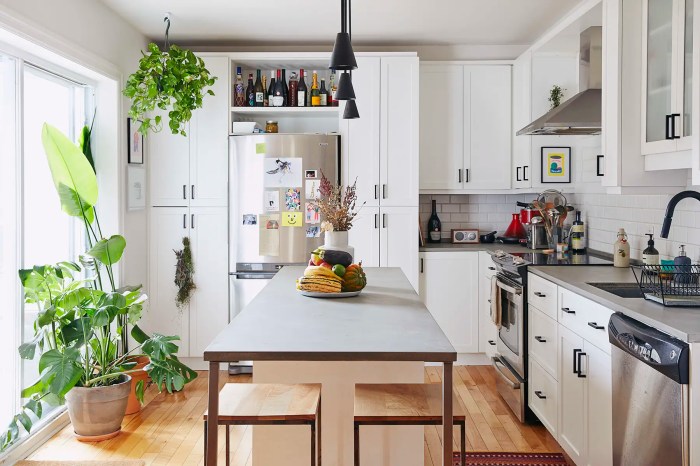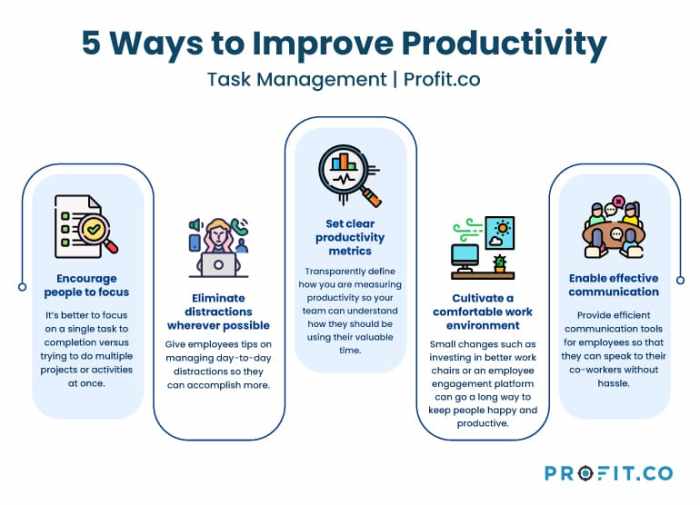
Transforming a small kitchen into a functional and stylish space doesn’t have to break the bank. With careful planning and a dash of creativity, you can achieve a stunning kitchen remodel without sacrificing your budget. This guide will walk you through every step, from maximizing space and updating appliances to revamping cabinets and incorporating smart lighting solutions.
We’ll explore cost-effective strategies for finding affordable materials and appliances, maximizing your kitchen’s potential, and even using financing options to make your dream kitchen a reality. Get ready to unlock the secrets of a budget-friendly kitchen remodel that will leave you amazed.
Planning and Budgeting
A successful kitchen remodel starts with a solid plan and a realistic budget. Carefully considering every aspect of the project will help you stay on track and avoid costly surprises.
Budgeting for a Kitchen Remodel
Creating a detailed budget is crucial for managing your finances and ensuring your remodel stays within your financial limits. It’s important to factor in all the costs associated with the project, including materials, labor, permits, and unexpected expenses.
Essential Budget Items
- Materials: This includes everything from cabinets and countertops to flooring, backsplash, and appliances.
- Labor: If you’re not doing the work yourself, factor in the cost of hiring contractors or skilled professionals.
- Permits: Check with your local building department for any required permits and associated fees.
- Unexpected Expenses: It’s always wise to allocate a contingency fund for unforeseen costs that might arise during the project.
Finding Affordable Materials and Appliances
There are several ways to save money on materials and appliances without compromising quality:
- Shop around: Compare prices from different retailers and suppliers to find the best deals.
- Consider used or refurbished appliances: Many retailers offer discounted prices on used or refurbished appliances that are still in good condition.
- Utilize online marketplaces: Websites like Craigslist, Facebook Marketplace, and OfferUp often have listings for used kitchen materials and appliances at affordable prices.
- DIY projects: Consider taking on some of the simpler tasks yourself, such as painting, installing backsplash, or assembling cabinets.
Home Improvement Loans and Financing Options
If your budget is tight, consider using a home improvement loan or other financing options to help fund your kitchen remodel.
- Home Equity Loan: This type of loan allows you to borrow against the equity you’ve built up in your home.
- Home Improvement Loan: These loans are specifically designed for home renovations and often come with lower interest rates than personal loans.
- Credit Cards: Using a credit card with a 0% introductory APR can be a good option for short-term financing, but make sure you can pay off the balance before the introductory period ends.
Remember to carefully consider the terms and conditions of any loan or financing option before making a decision.
Maximizing Space
In a small kitchen, every inch counts. The key to making the most of your space is to think vertically and multi-functionally. By utilizing clever storage solutions and furniture that serves multiple purposes, you can create a kitchen that is both stylish and efficient.
Designing a Layout Plan
The layout of your kitchen is crucial for maximizing space. Start by taking accurate measurements of your kitchen, including the height of the ceiling. Then, sketch out a floor plan, marking the location of existing fixtures like windows, doors, and plumbing. This will help you visualize how you can best arrange your appliances, cabinets, and countertops.
- Consider a galley layout: This layout is perfect for small kitchens, as it maximizes counter space and minimizes wasted space. A galley kitchen typically has two parallel walls with cabinets and countertops on both sides.
- Optimize the work triangle: The work triangle is the imaginary space between the sink, stove, and refrigerator. The ideal work triangle is between 4 and 6 feet, so ensure that your layout allows for efficient movement between these three points.
- Minimize aisles: Aim for aisles that are at least 36 inches wide, but strive to make them narrower if possible. This will allow you to maximize counter space and storage.
Utilizing Vertical Space
Vertical space is often overlooked in small kitchens, but it can be a valuable asset. Maximize vertical space by incorporating shelves, cabinets, and storage solutions that reach to the ceiling.
- Open shelving: Open shelves are a great way to display dishes, cookbooks, and decorative items. They can also be used to store frequently used items.
- Wall-mounted cabinets: Wall-mounted cabinets are a space-saving alternative to traditional base cabinets. They can be installed above countertops or even in the corners of the room.
- Corner cabinets: Corner cabinets are designed to fit into the corners of a room, maximizing storage space in often-overlooked areas.
- Hanging racks: Hanging racks are a great way to store pots, pans, and other kitchen tools. They can be installed on the wall or above the countertop.
Multi-Functional Furniture and Appliances
Multi-functional furniture and appliances are essential for small kitchens. Look for items that serve multiple purposes, such as a table that can also be used as a breakfast bar, or a refrigerator that also has a built-in ice maker and water dispenser.
- Folding tables: Folding tables are a space-saving option for dining or prepping food. They can be folded away when not in use.
- Countertop appliances: Countertop appliances, such as blenders, toasters, and coffee makers, can free up valuable cabinet space.
- Multi-functional appliances: Look for appliances that can perform multiple tasks, such as a microwave that also doubles as a convection oven or a slow cooker that can also be used as a rice cooker.
Space-Saving Ideas for Small Kitchens
| Image | Description |
|---|---|
| [Image of a small kitchen with a pull-out pantry] | Pull-out pantry: A pull-out pantry is a great way to maximize storage space in a small kitchen. It can be installed in a cabinet or under a countertop. |
| [Image of a small kitchen with a corner carousel] | Corner carousel: A corner carousel is a rotating shelf system that allows you to access items in the corner of a cabinet without having to reach into the back. |
| [Image of a small kitchen with a magnetic knife rack] | Magnetic knife rack: A magnetic knife rack is a space-saving way to store knives. It can be installed on the wall or on the back of a cabinet door. |
| [Image of a small kitchen with a tiered fruit basket] | Tiered fruit basket: A tiered fruit basket is a stylish and space-saving way to store fruits and vegetables. It can be placed on the countertop or hung from the ceiling. |
Updating Appliances
Replacing old appliances can be a significant investment, but it’s essential for enhancing functionality and efficiency in your kitchen. Choosing the right appliances can transform your cooking experience and make your small kitchen feel more spacious and modern.
Appliance Types and Features
Understanding the different types of appliances available and their features is crucial for making informed decisions.
- Refrigerators: Refrigerators come in various sizes, styles, and features. For small kitchens, consider a compact refrigerator or a French door model with a bottom freezer compartment, which maximizes vertical space. Look for features like adjustable shelves, door bins, and ice makers to optimize storage and convenience.
- Ovens: Ovens are available in various sizes and types, including conventional, convection, and microwave ovens. Convection ovens circulate hot air, resulting in faster and more even cooking. For small kitchens, a countertop oven or a combination microwave/oven can be a space-saving solution.
- Dishwashers: Dishwashers can be a game-changer in a small kitchen, freeing up valuable counter space and reducing water usage. Look for compact dishwashers designed for smaller households. Features like adjustable racks and a third rack for utensils can maximize space and efficiency.
Energy-Efficient and Budget-Friendly Appliances
Choosing energy-efficient appliances can save you money on your utility bills in the long run.
- Energy Star Certification: Look for appliances with the Energy Star certification, which indicates that they meet specific energy-efficiency standards.
- Appliance Ratings: Check the appliance’s energy efficiency rating, often measured in kilowatt-hours (kWh). Lower kWh ratings indicate greater energy efficiency.
- Rebates and Incentives: Many utility companies and local governments offer rebates and incentives for purchasing energy-efficient appliances. Check with your local utility company or government website for available programs.
Refurbished or Gently Used Appliances
Refurbished or gently used appliances can be a budget-friendly alternative to buying new.
- Quality Assurance: Ensure that the refurbished appliance comes with a warranty and has been thoroughly inspected and tested.
- Trusted Retailers: Purchase from reputable retailers specializing in refurbished appliances to minimize the risk of buying a faulty product.
- Cost Savings: Refurbished appliances can often be purchased at a significant discount compared to new appliances, allowing you to save money without compromising quality.
Appliance Options for Small Kitchens
Here’s a table showcasing different appliance options for small kitchens, including price ranges and features:
| Appliance Type | Option | Price Range | Features |
|---|---|---|---|
| Refrigerator | Compact Refrigerator | $300 – $700 | Small footprint, energy-efficient, adjustable shelves, door bins |
| French Door Refrigerator with Bottom Freezer | $1,000 – $2,500 | Spacious, easy access, ice maker, water dispenser | |
| Oven | Countertop Oven | $100 – $300 | Compact, versatile, convection cooking |
| Combination Microwave/Oven | $200 – $500 | Space-saving, multi-functional, quick reheating | |
| Dishwasher | Compact Dishwasher | $400 – $800 | Small size, adjustable racks, third rack for utensils |
Revamping Cabinets and Countertops

Revamping your kitchen cabinets and countertops can significantly enhance the look and feel of your space without breaking the bank. These are often the focal points of the kitchen, so investing in their transformation can have a major impact on the overall aesthetic.
Refinishing Existing Cabinets
Refinishing your cabinets is a cost-effective way to give them a fresh look. It involves stripping off the old finish, sanding the wood, and applying a new coat of paint or stain. This process can be done by a professional or tackled as a DIY project.
- Prepare the Cabinets: Start by removing all cabinet doors and hardware. Thoroughly clean the cabinets with a degreaser to remove any grease or grime. Use a scraper or sanding block to remove any loose paint or varnish.
- Strip the Old Finish: Apply a chemical stripper to remove the existing finish. Follow the manufacturer’s instructions carefully, as some strippers require multiple applications. Always wear gloves and a mask when working with chemical strippers.
- Sand the Cabinets: After stripping, sand the cabinets with progressively finer grits of sandpaper to create a smooth surface. Start with a coarse grit and work your way up to a fine grit.
- Prime and Paint or Stain: Apply a primer to seal the wood and create a smooth surface for paint or stain. Choose a primer that is compatible with your desired finish. Once the primer is dry, apply two coats of paint or stain, allowing each coat to dry completely before applying the next.
- Reinstall Hardware and Doors: After the paint or stain is dry, reinstall the cabinet hardware and doors. Clean the cabinets with a damp cloth to remove any dust or debris.
Countertop Materials
Countertops are another key element in a kitchen remodel. Choosing the right material can significantly impact the overall look, functionality, and durability of your kitchen.
- Laminate: Laminate countertops are the most affordable option. They come in a wide range of colors and patterns, making it easy to find a style that complements your kitchen. Laminate is also easy to clean and maintain. However, it is not as durable as other materials and can be prone to scratches and water damage.
- Butcher Block: Butcher block countertops are made from solid wood, often maple or walnut. They are known for their durability and warmth, making them a popular choice for kitchens. Butcher block is also relatively easy to repair, making it a good choice for families with children. However, it requires regular oiling to prevent dryness and cracking. It is also more susceptible to scratches and stains than other materials.
- Quartz: Quartz countertops are made from engineered stone, combining quartz crystals with resin. They are highly durable, resistant to scratches, stains, and heat. Quartz comes in a wide range of colors and patterns, making it a versatile choice for any kitchen. However, it is more expensive than laminate or butcher block. Quartz is also non-porous, which can make it difficult to repair if it is damaged.
Countertop Colors and Patterns
Choosing the right countertop colors and patterns can create a spacious feel in your kitchen. Light colors reflect more light, making the space feel larger. Consider using light-colored countertops with darker cabinets to create a contrast that visually expands the space. Patterns can also be used to create a sense of depth and dimension.
Countertop Material Comparison
| Material | Cost | Durability | Maintenance |
|---|---|---|---|
| Laminate | Low | Low | Low |
| Butcher Block | Medium | Medium | Medium |
| Quartz | High | High | Low |
Lighting and Color

Lighting and color play a crucial role in transforming a small kitchen into a bright and inviting space. By strategically utilizing lighting techniques and carefully selecting paint colors, you can create the illusion of more space, enhance the ambiance, and highlight key features.
Using Lighting to Enhance the Space
Proper lighting is essential for creating a welcoming and functional kitchen. It can enhance the overall appearance, making the space feel larger and more inviting. Consider these lighting options:
- Ambient Lighting: Overhead lighting, such as recessed lights or pendant lights, provides general illumination. Choose fixtures with a soft, warm glow to create a cozy atmosphere.
- Task Lighting: Install under-cabinet lights or track lighting above the countertop to provide focused light for food preparation and cleaning tasks.
- Accent Lighting: Use accent lights to highlight specific features, such as artwork, open shelving, or a focal wall. This can add visual interest and create a sense of depth.
Choosing Paint Colors to Make a Small Kitchen Feel Larger
The right paint color can make a small kitchen feel more spacious. Here are some tips for choosing colors that create a sense of openness:
- Light and Neutral Colors: White, cream, beige, and pale gray reflect light, making the space appear larger.
- Cool Colors: Blue, green, and purple can also make a room feel more spacious, especially when used in lighter shades.
- Avoid Dark Colors: Dark colors can make a small kitchen feel cramped and closed-in. If you want to use a darker color, consider using it on an accent wall or a small section of the room.
Incorporating Mirrors and Reflective Surfaces
Mirrors and reflective surfaces can be effective in creating the illusion of more space. Here’s how to use them strategically:
- Large Mirrors: Place a large mirror on a wall to reflect light and create the illusion of a larger room.
- Reflective Backsplash: Consider using a reflective backsplash material, such as glass or metal, to bounce light around the kitchen.
- Metallic Accents: Incorporate metallic accents, such as stainless steel appliances or chrome fixtures, to add shine and reflect light.
Lighting Options for Small Kitchens
| Type | Placement | Benefits |
|---|---|---|
| Recessed Lighting | Ceiling | Provides even, general illumination. |
| Pendant Lights | Over the island or countertop | Adds a decorative element and provides focused light. |
| Under-Cabinet Lighting | Beneath cabinets | Provides task lighting for food preparation. |
| Track Lighting | Above the countertop | Offers flexible lighting options and can be adjusted to highlight specific areas. |
Home Improvement Straw
A home improvement straw, also known as a home equity loan or a home equity line of credit (HELOC), can be a helpful tool for financing a small kitchen remodel. It allows you to borrow money against the equity you’ve built up in your home, giving you access to funds for renovations.While it can provide the necessary funds for a kitchen makeover, it’s essential to understand how it works and its potential impact on your finances before making a decision.
Pros and Cons of Using a Home Improvement Straw
The decision to use a home improvement straw for your kitchen remodel should be based on a careful evaluation of its advantages and disadvantages. Here’s a breakdown of the pros and cons:
Pros:
- Lower Interest Rates: Home improvement straws often have lower interest rates than personal loans or credit cards, which can translate to significant savings over the life of the loan.
- Tax Deductibility: In some cases, interest paid on a home improvement straw may be tax-deductible, depending on your specific situation and the type of improvements made.
- Larger Loan Amounts: You can typically borrow larger amounts with a home improvement straw compared to other financing options, allowing you to cover more extensive renovations.
- Flexible Repayment Options: Home improvement straws often offer flexible repayment options, such as fixed monthly payments or adjustable rates, allowing you to choose a plan that best suits your financial situation.
Cons:
- Risk of Foreclosure: If you fail to make your loan payments, your home could be at risk of foreclosure, as the loan is secured against your property.
- Increased Debt: Taking out a home improvement straw will increase your overall debt burden, which can impact your credit score and make it more difficult to obtain future loans.
- Closing Costs: Home improvement straws often come with closing costs, which can add to the overall expense of the loan.
- Equity Loss: Borrowing against your home equity reduces the amount of equity you have in your property, which can limit your future borrowing options.
Factors to Consider Before Taking Out a Home Improvement Straw
Before you decide to use a home improvement straw for your kitchen remodel, carefully consider the following factors:
- Your Credit Score: Lenders typically require a good credit score to qualify for a home improvement straw. If your credit score is low, you may face higher interest rates or be denied a loan.
- Your Debt-to-Income Ratio: Lenders also look at your debt-to-income ratio (DTI), which is the percentage of your monthly income that goes towards debt payments. A high DTI can make it difficult to qualify for a loan.
- Your Home’s Equity: The amount of equity you have in your home determines how much you can borrow. If you have little equity, you may not be able to borrow enough to cover your renovation costs.
- The Loan Terms: Carefully review the loan terms, including the interest rate, repayment period, and any fees associated with the loan.
- Your Financial Situation: Consider your overall financial situation and whether you can comfortably afford the monthly payments on the loan.
Alternatives to a Home Improvement Straw
- Personal Loan: Personal loans are unsecured loans that don’t require collateral. They can be a good option for smaller renovations, but they often have higher interest rates than home improvement straws.
- Credit Card: You can use a credit card to finance your kitchen remodel, but be aware of the high interest rates and potential for accumulating debt.
- Savings: If you have enough saved up, you can pay for your kitchen remodel out of pocket, which will save you on interest payments.
Remodeling a small kitchen on a budget is a rewarding journey that combines creativity, resourcefulness, and a touch of DIY magic. By following the tips and strategies Artikeld in this guide, you can create a space that is both beautiful and functional, reflecting your unique style and maximizing your kitchen’s potential. Remember, a successful kitchen remodel is about more than just aesthetics – it’s about creating a space that inspires and delights you for years to come.
Query Resolution
What are some common mistakes to avoid when remodeling a small kitchen on a budget?
Common mistakes include overspending on unnecessary items, neglecting to factor in unexpected expenses, and choosing materials that are not durable or easy to maintain. It’s also important to avoid rushing the process and ensure you have a clear plan before starting any work.
Can I get financing for a small kitchen remodel?
Yes, there are various financing options available, including home improvement loans, credit cards, and personal loans. It’s crucial to compare interest rates and terms from different lenders to find the best option for your needs and budget.
How can I make my small kitchen feel bigger?
Using light colors, incorporating mirrors and reflective surfaces, and maximizing vertical space with shelves and cabinets can all help create the illusion of a larger kitchen. Additionally, consider using multi-functional furniture and appliances to maximize space efficiency.
What are some budget-friendly countertop options for a small kitchen?
Laminate countertops are a cost-effective option that offers a wide range of colors and patterns. Butcher block countertops provide a natural and rustic look, while quartz countertops offer durability and low maintenance.




